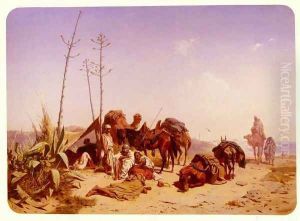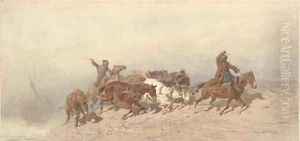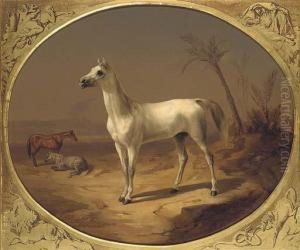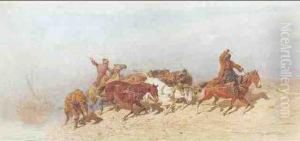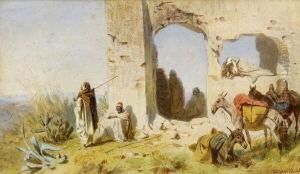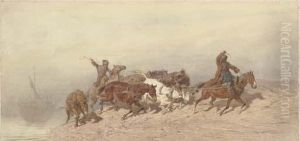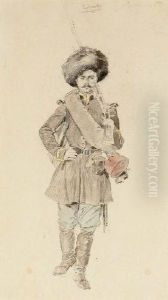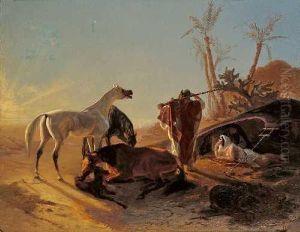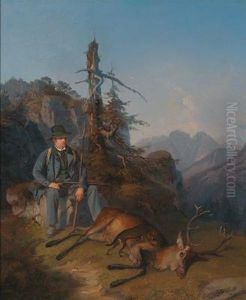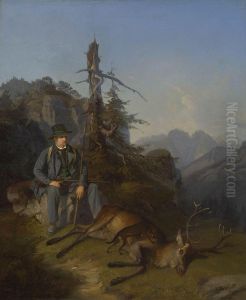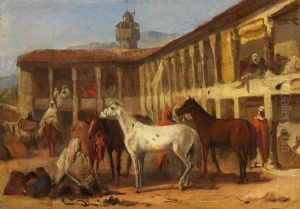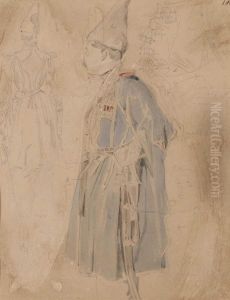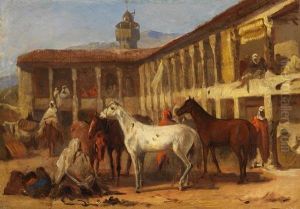Theodore Horschelt Paintings
Theodore Horschelt was a German painter known for his detailed and vivid representations of Caucasian and Oriental scenes, particularly focusing on the peoples and landscapes of the Caucasus region. Born on May 14, 1829, in Munich, Germany, Horschelt's artistic journey was influenced significantly by the cultural and political milieu of 19th-century Europe, a period marked by romanticism and an increasing interest in exotic and foreign cultures.
Horschelt embarked on his artistic career after receiving formal training at the Academy of Fine Arts Munich, one of the most prestigious art schools in Germany. His education there equipped him with the technical skills and artistic sensibilities that would define his body of work. The mid-19th century was a time when European artists were increasingly drawn to the East for inspiration, a trend known as Orientalism. Horschelt, too, was captivated by the allure of the East, and this fascination would eventually lead him to travel extensively in the Caucasus region.
In 1858, Horschelt embarked on a journey to the Caucasus, a region that was then little-known to many Europeans. Over the course of his travels, he diligently sketched and painted the landscapes, peoples, and customs he encountered, displaying a keen eye for detail and a profound respect for the subjects of his works. These artworks not only showcased his remarkable talent as a painter but also served as some of the most insightful and accurate visual records of the Caucasus region during that period.
Upon his return to Germany, Horschelt's works were met with considerable acclaim. His paintings were celebrated for their detailed realism, vibrant coloration, and the depth of their cultural insight. Through his art, Horschelt provided European audiences with a glimpse into a world that was vastly different from their own, contributing significantly to the period's fascination with Orientalism.
Unfortunately, Theodore Horschelt's promising career was cut short when he died on June 11, 1871, at the age of 42. Despite his relatively brief career, Horschelt left behind a legacy that continues to be appreciated by art historians and collectors alike. His work remains a valuable window into the cultures of the Caucasus region during the 19th century, offering insights not only into the area's physical landscape but also into the lives of its people. Horschelt's dedication to capturing the essence of his subjects with accuracy and sensitivity has cemented his place in the annals of art history as a distinguished practitioner of Orientalist painting.
